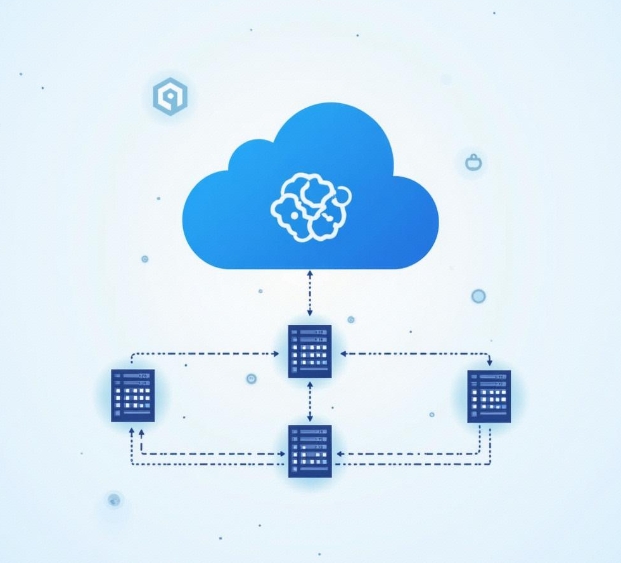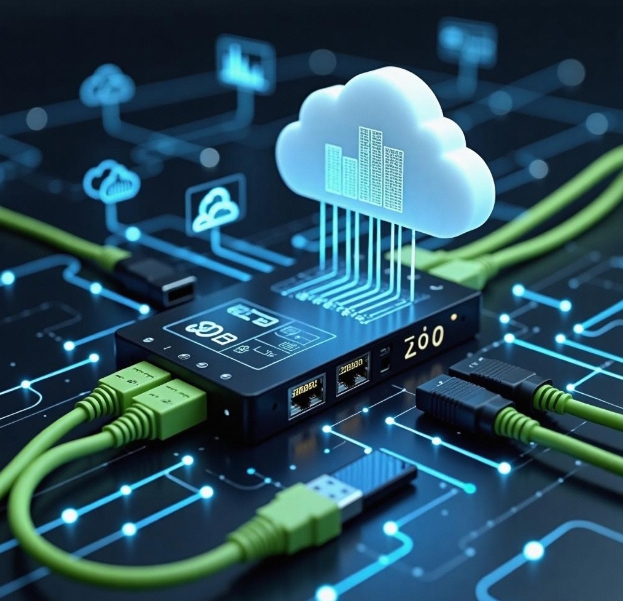Cloud Computing and Edge Computing: How to Achieve More Efficient Data Processing
- latest articles
- 1.DApp Development & Customization: Merging Diverse Market Needs with User Experience 2.Analysis of the Core Technical System in DApp Project Development 3.How to achieve cross-chain interoperability in Web3 projects? 4.How does the tokenization of points reconstruct the e-commerce ecosystem? 5.How to Set and Track Data Metrics for a Points Mall? 6.What is DApp Development? Core Concepts and Technical Analysis 7.Inventory of commonly used Web3 development tools and usage tips 8.Development of a Distribution System Integrated with Social E-commerce 9.Six Key Steps for Businesses to Build a Points Mall System 10.What is DApp Development? A Comprehensive Guide from Concept to Implementation
- Popular Articles
- 1.Future Trends and Technology Predictions for APP Development in 2025 2.Analysis of the DeFi Ecosystem: How Developers Can Participate in Decentralized Finance Innovation 3.From Zero to One: How PI Mall Revolutionizes the Traditional E-commerce Model 4.DAPP Development | Best Practices for Professional Customization and Rapid Launch 5.Recommended by the Web3 developer community: the most noteworthy forums and resources 6.From Cloud Computing to Computing Power Leasing: Building a Flexible and Scalable Computing Resource Platform 7.How to Develop a Successful Douyin Mini Program: Technical Architecture and Best Practices 8.Shared Bike System APP: The Convenient Choice in the Era of Smart Travel 9.How to Create a Successful Dating App: From Needs Analysis to User Experience Design 10.From Design to Development: The Complete Process of Bringing an APP Idea to Life
With the continuous development of internet technology, the speed and volume of data generation are rapidly increasing. Cloud computing and edge computing, as two important computational models, are gradually becoming the core of modern data processing. Cloud computing processes massive amounts of data through centralized data centers, while edge computing distributes computational tasks to the network edge for processing. The combination of the two can significantly enhance the efficiency and response speed of data processing. However, in practical applications, how to reasonably select and integrate these two computational models remains a topic worthy of in-depth discussion. This article will analyze the characteristics, advantages, and integration methods of cloud computing and edge computing, exploring how their combination can achieve more efficient data processing.
Definition and Advantages of Cloud Computing
Cloud computing refers to providing computing resources (such as storage, computing power, etc.) to users over the internet. It centralizes data storage and processing capabilities in cloud servers, allowing users to access these resources via the internet with minimal concern for hardware infrastructure and maintenance. The main advantages of cloud computing include:
Elastic Scalability: Users can flexibly increase or decrease computing resources according to their needs, adapting to different workload demands.
Low Cost: Users do not need to purchase or maintain expensive hardware equipment, reducing computing and storage costs through a pay-as-you-go model.
High Availability: Cloud service providers typically deploy redundant systems across multiple data centers, ensuring high availability and fault recovery capabilities.
Global Access: Users can access cloud computing resources from anywhere via the internet, supporting distributed work environments.
However, cloud computing also has some limitations, the most notable being latency issues. When users need to process large amounts of data, transmitting data from end devices to the cloud for processing and then back to the user's device may result in high latency, affecting applications with high real-time requirements.

Definition and Advantages of Edge Computing
Edge computing, on the other hand, involves performing computations and data processing close to the data source, shifting computational tasks from the cloud to edge devices in the network, such as IoT devices, routers, and smart terminals. This approach improves processing efficiency while reducing data transmission. The advantages of edge computing include:
Low Latency: Since data processing occurs near the data source, edge computing significantly reduces data transmission time and latency, making it particularly suitable for applications requiring real-time responses.
Bandwidth Savings: Processing data at the edge can filter and compress irrelevant data, transmitting only the necessary portions to the cloud, thereby reducing bandwidth consumption.
Enhanced Security: Edge computing allows for preliminary data processing and analysis locally, reducing the risk of data leakage during transmission and improving data security.
Autonomy: Edge devices typically possess a certain level of autonomous computing capability, enabling them to operate independently without cloud support, adapting to complex environmental changes.
Edge computing is especially suitable for applications with high real-time requirements, such as the Internet of Things (IoT), autonomous driving, and smart manufacturing.
Complementarity of Cloud Computing and Edge Computing
Although cloud computing and edge computing each have their own advantages, they are not mutually exclusive. Instead, they can complement each other, and their combined use can lead to more efficient data processing methods.
1. Division of Labor Between Cloud and Edge
In practical applications, the division of labor between cloud computing and edge computing can be reasonably arranged based on the specific requirements of tasks. For tasks requiring high real-time performance and low latency (such as autonomous driving and industrial control), computational tasks can be allocated to the edge for processing. For tasks with high computational demands and large data storage requirements (such as big data analysis and machine learning), they can be handled by cloud computing platforms.
2. Advantages of Hybrid Architecture
By constructing a hybrid architecture that combines cloud computing and edge computing, data processing can be carried out in a layered and phased manner. For example, edge devices can perform initial data collection and processing, filtering out valuable data before sending it to the cloud for deeper analysis and storage. This approach not only significantly reduces latency but also alleviates the computational burden on the cloud, improving overall computational efficiency.
3. Combining Data Localization and Remote Computing
In edge computing, data is typically processed and stored locally, which is particularly important for certain sensitive data. Edge computing can reduce the risk of data leakage. However, cloud computing provides more powerful computing capabilities and storage resources, making it suitable for large-scale data analysis and deep learning. Therefore, the combination of edge computing and cloud computing can achieve the complementary advantages of data localization and remote computing, ensuring data security while fully leveraging the powerful capabilities of cloud computing.

Application Scenarios of Cloud and Edge Computing Integration
As the integration of cloud computing and edge computing gradually becomes a trend, more and more practical application scenarios are adopting this combined model to enhance data processing efficiency.
1. Smart Manufacturing
In the field of smart manufacturing, edge computing can quickly detect anomalies on production lines by collecting and processing sensor data in real time and take corresponding measures. Cloud computing, on the other hand, can centrally analyze large amounts of data from different production lines, helping enterprises optimize production processes and reduce costs. The combination of the two ensures efficient and intelligent production processes.
2. Autonomous Driving
Autonomous driving is a typical application with extremely high latency requirements. Autonomous vehicles need to quickly process large amounts of data from sensors, cameras, and radar to make real-time decisions. Edge computing performs preliminary data processing within the vehicle, while cloud computing provides support such as high-precision maps and traffic data on a global scale. Thus, the combination of edge computing and cloud computing ensures the safety and efficiency of autonomous driving systems.
3. Smart Cities
Smart city projects cover multiple areas, including traffic management, environmental monitoring, and energy management. In these applications, edge computing enables rapid collection and processing of local environmental data, such as real-time monitoring of traffic conditions or air quality. Cloud computing can aggregate and analyze data from multiple cities, helping city managers make more precise decisions. The combination of the two enables more efficient urban management and operation.
4. Internet of Things (IoT)
IoT devices are widely distributed in various environments, such as homes, healthcare, and agriculture. These devices generate massive amounts of data, and edge computing can perform preliminary processing of this data locally, filtering out useful information, reducing data transmission burdens, and avoiding issues caused by bandwidth limitations or latency. Cloud computing, meanwhile, provides powerful data storage and analysis capabilities for IoT, promoting the intelligent and automated development of IoT.
Future Development Trends
With the continuous development of technologies such as 5G and artificial intelligence (AI), the integration of cloud computing and edge computing will become increasingly close. The high-speed network and low-latency characteristics of 5G provide broader application scenarios for edge computing, further promoting the collaboration between the two. Artificial intelligence can help optimize data processing workflows, enhancing the intelligence level of both cloud and edge computing.
Additionally, as data privacy and security issues become increasingly critical, edge computing will also become an important means of addressing data security. By processing and encrypting data locally, the risks of data leakage and misuse can be effectively mitigated.
Conclusion
Cloud computing and edge computing each have significant advantages. Through reasonable integration and division of labor, they can collectively enhance data processing efficiency and meet increasingly complex application demands. As technology continues to evolve, we have reason to believe that cloud computing and edge computing will bring more efficient and intelligent data processing solutions to various industries.
-

Applications and Challenges of Cloud Computing in the Internet of Things (IoT)
With the continuous advancement of information technology, cloud computing and t···
-

Integration of Cloud Computing and Artificial Intelligence: Enhancing Intelligent Applications
With the rapid advancement of technology, cloud computing and artificial intelli···
-

Data Security and Privacy Protection in Cloud Computing Applications
With the continuous advancement of information technology and the rapid developm···

 Blockchain
Blockchain










